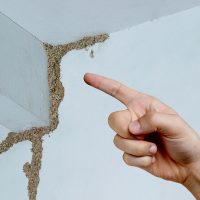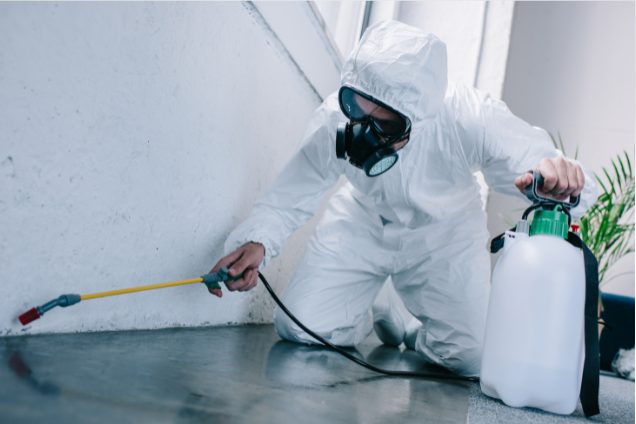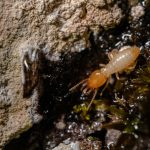The secret to efficient pest prevention and long-term protection lies in finding the perfect frequency level for expert pest control treatment.
Therefore, in this article, we will discuss the frequency and necessity of pest control treatments on your premises. This will help you make the most informed decision, providing you with a sense of reassurance about pest management.
Why Pest Control Must Be Carried Out Regularly
Professional services typically prevent infestations by detecting them early enough to prevent them from becoming a serious problem and taking measures to ensure they do not occur. This not only saves you money and provides a healthy and clean environment, but it also brings a sense of security, knowing you are in control of the pest infestation case.
Usually, domestic insects such as termites, cockroaches, and rodents infest houses, contaminate food, and cause illnesses, and failing to eliminate them at the right time can be risky.
Therefore, you don’t have to wait until you see the pests within your home to consider pest control treatment. You must be proactive and pre-plan pest control treatments even when there are no visible pests.
Notably, oftentimes when you see pests, it is likely because the infestation is already severe and the damage has already been done. But being proactive in this way will save you from this costly predicament.
Factors Affecting Pest Control Frequency
Several factors influence the frequency of pest control in a building. These factors include:
- Size of property compound: The size of larger compound properties will generally require pest control servicing more frequently because they have a greater insect catchment area. On these large compounds, insects can breed and thrive, necessitating more frequent control measures.
- Insect types: Case infestations, such as bed bugs and termites, require repeated treatment applications, whereas ordinary pests, like ants, which are commonly found in households, can be treated quarterly.
- Environmental conditions: Stagnant water, construction activities, and adverse weather conditions such as heavy rainfall or extreme heat, can increase the activity level of pests, necessitating more frequent pest control.
- History of Past Pest Infestation: Previously, pests infested items may need to be checked frequently to avoid re-infestation.
Recommended Pest Control Frequency for Various Settings
- Residential Complexes: A frequency of every 3 months will be sufficient in most residential complexes to provide general pest control. On the other hand, repeatedly re-infested buildings can be treated bi-monthly.
- Commercial Buildings: Medical, food handling, and restaurant facilities, require closer frequencies, typically on a monthly or bi-weekly basis. This enables the business owners to maintain stricter sanitation and audit standards.
- Termite Control: Anti-termite treatments, such as chemical barriers or bait stations, typically do not require re-treatment if applied correctly. However, it is best to have annual inspections to provide continuous protection.
- Emergency Situations: In the event of an emergency pest infestation situation, a one-time treatment for active infestations, such as rodents or bed bugs, can typically involve a series of calls spanning weeks or months.
One-Time vs. Ongoing Contracts
There are two broad options for pest control, which include a one-time solution or continuous prevention.
Usually, for isolated pest issues, a one-time solution may be viable, but for continuous pest infestation management, an ongoing plan is the better choice. The ongoing plan typically involves regular check-ups on a quarterly or bi-monthly basis and is generally more cost-effective than multiple one-time solutions.
Choosing an ongoing plan will not only save you money but also ensure your home or business remains pest-free, making you feel prudent and wise in your decision. Thus, choosing a recurring plan will cost you less and ensure your home or business remains pest-free.
Integrated Pest Management
Integrated Pest Management integrates prevention, inspection, and non-chemical, root-cause treatment, with minimal use of chemicals.
The process involves sealing entry points, controlling humidity, and applying selective treatments. Of particular importance is the frequent monitoring of the infestation status, allowing technicians to identify threats before they become realized and take remedial measures.
Conclusion
Based on the above discussion, waiting for pests to infest your property before taking action can be an expensive mistake. Notably, with routine pest control specifically designed for your property, you can adopt an active, cost-effective, and safe approach to pest control.
Therefore, there is a need for regular pest control checks and inspections by skilled pest control and management professionals. This will ensure that you develop a personalized plan, leaving you well-informed and in charge of your pest control measures.
Lastly, our skilled professionals provide customized solutions for effective and reliable regular pest control measures. Contact us today to book a free pest inspection and a precise quotation.








































